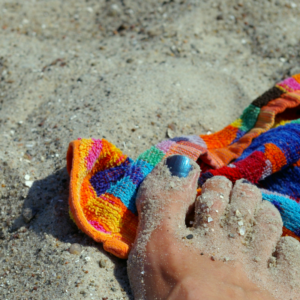Fort Morgan is home to some of the most beautiful stretches of beach in the world. We’re known for our sugar sand, clear blue waters, and warm temperatures. This makes swimming one of the most enjoyable activities to experience a reprieve from the summer swelter. However, swimming in the Gulf also comes with some dangers. It’s vulnerable to wave changes and riptides, especially during hurricane season. Observe some basic safety practices to keep you and your loved ones safe this year.

1. Cue Into Local Alerts
The National Weather Service typically handles notice of dangerous water changes and will post riptide warnings on popular weather websites. If you have a weather app on your phone, check it before you hit the beach. It will tell you whether the water is safe to swim in for the day. The Gulf Shores Alabama website also has important information regarding beach status, water quality reports, and more.
2. Be Wary of Waves
Waves can be fun to swim in, but they’re also more powerful than most people think. While most people only sustain minor injuries from crashing waves, they can put a damper on your summer fun. Fortunately, by observing some simple safety tips, you can reduce your risk of injury. Never turn your back on the waves, which can send you crashing face down. Additionally, keep an eye on where waves are breaking, and don’t let children wade deep into the waves.
3. Never Drink and Swim
Alcohol and swimming don’t mix. Even the most experienced swimmers experience sluggishness, dehydration, and decreased reaction time after consuming alcohol This can lead to a dangerous scenario, especially in combination with a riptide or other dangerous beach condition. Leave the alcohol at home and enjoy your beach time sober.
4. Know the Beach Flag Warning System
The Gulf Coast uses a beach flag warning system to inform users about riptides, water quality concerns, swimming conditions, and more. Get to know the system and ask a lifeguard if you have any questions. In general, blue or purple flags mean the presence of dangerous marine life, red means hazardous conditions, and yellow means use caution, especially for younger swimmers.
Swimming is one of the best parts of living in this part of the country, but it still comes with dangers. Observing some basic safety tips can help keep you and your loved ones safe. Follow these guidelines and enjoy the rest of your summer!



Leave a Reply